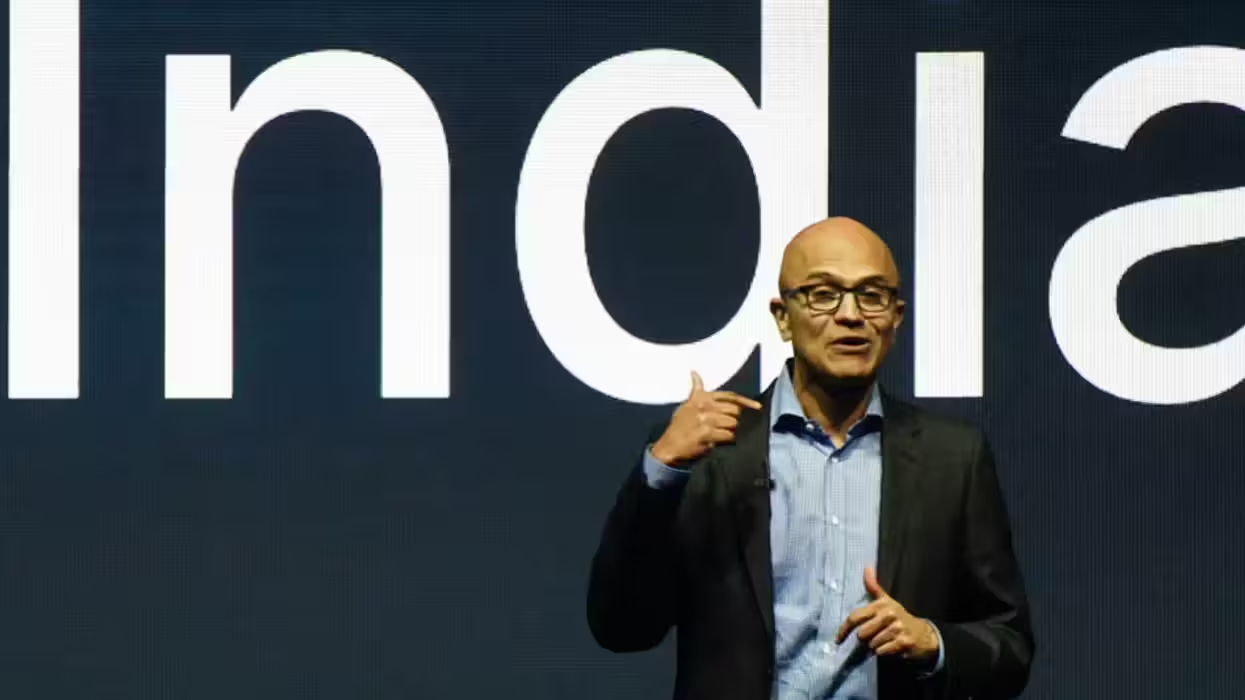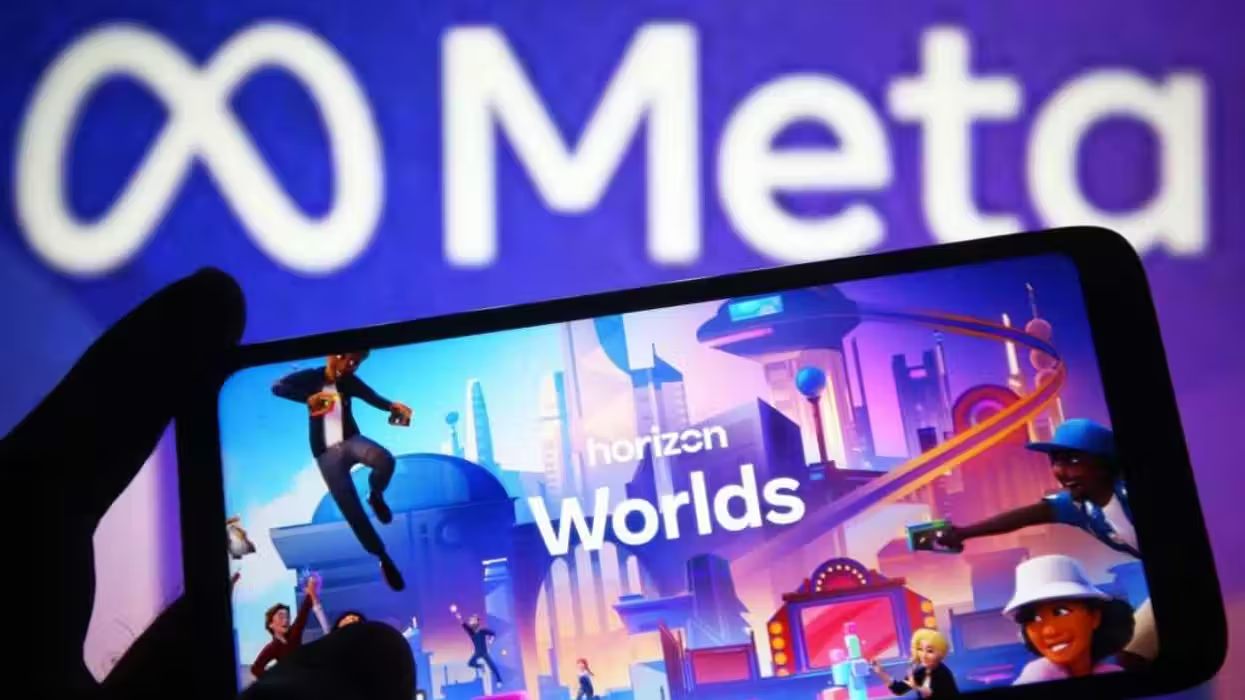
© 2026 Blaze Media LLC. All rights reserved.
Where Web 2.0 moved us from 1990s-style static websites to user-generated online experiences like social media, Web3 is a vision of the internet in which centralized platforms make way for a peer-to-peer and user-owned internet.
Fears of being unbanked, having the value of your assets vaporized by inflation, and having your communications spied on and censored — Web3 promises to address all of these with a mix of public blockchains and smart contracts.
But Web3 hasn’t yet delivered on these promises in a way that the majority of legacy Web 2.0 users can appreciate, so there’s debate about how much of it is smoke and mirrors. We asked four tech insiders for their thoughts.
Nic Carter

There’s a real and revolutionary conception of Web3, and then there’s the venture capitalist’s pipe dream.
The move from Web 1.0 to Web 2.0 was a move from websites built to broadcast content to online experiences that encouraged users to produce content. But economies of scale in internet infrastructure meant that a few enormous companies came to dominate the web via control of authentication, hosting, and content delivery. The world of Web 2.0 is exclusionary, surveilled, fragmented, and operated by capricious “trust and safety” teams who act as extensions of autocratic states.
The term “Web3,” still poorly codified, generally refers to an internet in which end users can interact with internet services without relying on a Silicon Valley oligopoly for credentials and without outsourcing hosting to centralized firms. Web3 aims to reassert property rights over the internet, allowing users to interact and engage in commerce without having their digital property arbitrarily seized.
VC investment mandates are incompatible with their stated objectives for Web3. When push comes to shove, ideology will lose out to the bottom line.
Web3 is in its infancy, but key pieces have been created. Blockchain public-key credentials are gaining traction as an alternative sign-in mechanism that requires no third-party authentication. Passwords will be similarly deprecated in favor of user-maintained cryptographic material. Distributed file storage is now a reality. Other crucial parts of the web, like DNS, have been meaningfully decentralized.
That component of the Web3 vision is urgent. Political, social, and economic necessity dictates that it be realized, as the alternative is a CCP-inspired surveillance blandernet run like the DMV and regulated like the banking sector.
One complication is the insistence of some that Web3 be “user-owned” in a literal sense, as in making users the owners of the network equity in the form of tokens. The idea is that by contributing equity tokens on a usage-weighted basis to users of, say, a social network, the cap table would be more egalitarian by compensating users for content.
That conception is where Web3 gets fake. The fact that the venture capital firms that dominate the existing feudal internet are the chief proponents of this idea should inspire questions regarding their sincerity. On the one hand, they extol the disintermediation and consumer surplus portended by the technology, but on the other, they allocate billions of dollars to gaining access to the equity of these projects before the public. If they believe that the corporate internet platform is a thing of the past, then they wouldn’t be interested. Are VCs investing in a sector on the cusp of a Marxist takeover? Quite the opposite. One is reminded of the voucher privatization schemes in post-Soviet states: Regular people sold their shares, and capital became highly concentrated.
VC investment mandates are incompatible with their stated objectives for Web3. When push comes to shove, ideology will lose out to the bottom line, as was the case with Web 2.0. This isn’t to say that users will not enjoy genuine property rights on a new internet where power is distributed to the edges of the network; this will continue to take place. But the ambition of turning over platform equity to the memeproleteriat is unlikely to be realized, certainly not through the beneficence of venture capital.
Nic Carter is a general partner at Castle Island Ventures and the cofounder of Coin Metrics.
Galen Wolfe-Pauly

Web3 is very real; it’s just temporarily annoying.
New technology takes time to evolve and stabilize. And once it does, it takes even more time to figure out how to make that new technology intelligible and approachable. Web3 is very real, but it’s very early.
Using Web3 is confusing, disjointed, and awkward. Wallets, browser extensions, key management, transaction signing – it’s an absolutely horrible user experience. And by contrast, there’s an insufferable hype machine generating hilarious amounts of capital. It’s understandable that for most people, Web3 feels insufferably fake. It’s actually kind of silly to even call it a “web” at all. It’s far from cohesive and interconnected.
Web3 is a bit like the internet in 1997. Today’s domain-name craze is NFT monkeys, and the Netscape IPO is now called “Solana.” It wasn’t until 2004 that we got Facebook and Gmail.
But if you can ignore all of the hype and set aside the fact that using Web3 is mostly terrible, something very important is going on. The infrastructure that powers the internet is completely out of step with how people use it. We depend on the apps and services of today to run our communities, companies, and families.
But can they last? Can we trust them?
Purely from a technical standpoint: definitely not. Every app and service relies on a company, and no company can last forever. Every company has to run the server, and it’s impossible to know what’s happening on the server side. This model leaves us all hopelessly compromised.
Centralized services are simply ngmi.
We got the internet more or less by accident. The world in which companies run all of our apps and services is just due to the fact that demand outpaced our ability to actually design and build technology for a connected world. The apps and services of today are built by duct-taping together components on top of an OS from fifty years ago. Thinking that this horrifically complicated system is going to be the foundation of society is an obvious mistake. Centralized services are simply NGMI.
The basic technical thesis of Web3 is that the protocols for day-to-day computing should be robust, reliable, and truly owned by the people who depend on them. I have no doubt that our communities, companies, and families will have a better life in the digital world when Web3 gets its PC or Windows or iPhone. And, let’s be honest, that’s not going to happen without Urbit.
Galen Wolfe-Pauly is the CEO of Tlon, a company building an operating system and peer-to-peer network called Urbit.
Indian Bronson

Centralization is inevitable, but Web3 allows it to happen in better ways.
With great alacrity, we’ve seen the rise of Web3 venture capitalists, Web3 founders, Web3 influencers, and Web3 experts. I don’t claim to be any of those. Randi Zuckerberg can, I guess.
From one perspective, “decentralization,” insofar as it’s the phenomenon of being “on the blockchain” and not beholden to anyone else’s database, hasn’t prevented “cancellations,” nor has it prevented “hacks.” It hasn’t stopped Ponzi schemes or confidence scammers. From this perspective, it’s made all of these things even worse.
After a decade or so of de-platforming from centralized institutions and platforms served online inspired a growing desire for an alternative, the crescendo of Web3 hasn’t lived up to the hype.
- People who misbehave (e.g., are normal Catholics) get booted from the company building the Ethereum Name Service.
- NFTs that people think are safe on OpenSea aren’t; the artwork turns out not to even be stored on blockchain, and you get a fancy URL but not the asset served by it.
- A seed phrase gets mistakenly shared once, resulting in massive, irreversible losses.
That is an accurate but superficial perspective on Web3. It doesn’t begin to realize what those pitfalls entail about Web3’s true bounty, that of genuine ownership and sovereignty. If you can lose your crypto by losing your seed phrase, that means you really own it, exclusively.
If you can’t, if there’s always a higher power to rely on; you aren’t really finally responsible. Web3 carries the promise of responsibility into everything it touches. We’re so far removed from concepts like “allodial title” that we overlook how much of our home ownership is just super-renting. The superficial perspective says every smart contract is a live bug bounty.
The crescendo of Web3 hasn’t lived up to the hype.
The smart perspective notices that a simple fat-finger error cost Citigroup half a billion dollars in paying Revlon. There was human accountability there. The judge has no idea what “Pragma” or a “custodial bridge” is. Citigroup still lost its money. In the fullness of time, more people will care about self-custodied funds, but they won’t call it that, in the same way you don’t use “electronic banking,” just a bank.
More people will care about decentralization, but they won’t think about it that way; they’ll just find it odd that a middle-man entity has to own their personally identifiable information to save lives or whatever reason is used to justify the status quo. The perceptual fight is the most important to win. It would be a shame to underutilize these technologies and keep our horizons tightly drawn.
It’s true that platforms and institutions are centralized, but who will see their entities decentralized into a flurry of competitors, and on whom will they recentralize? Web3 is fast Exit, in the Exit-Voice-Loyalty paradigm. When Exit and building are so easy, whatever is to persist must inspire real loyalty. Rather than be locked into the market (and other) egregores of the past, Web3 will let us pick up stakes and build anew, as many times as we need to determine with whom we can settle.
Indian Bronson is the COO at Swype, a crypto wallet and card that aims to help regular people hasten their exit from centralized banking institutions.
Mark Wilcox

It doesn’t matter if Web3 is fake. It’s an enigma that makes money.
What’s important is that a war is going on, one we’ve all signed up for through social networks. Our task is creating and correcting mistakes at every level since the oracles of Silicon Valley can’t afford to compute them. Unless we direct our attention to the root of the problem, we’ll just be further pulled toward screens.
Problems we think are to do with freedom of speech are really about freedom of association, which our decision-making systems have not been designed to implement.
New concepts, relationships, and coordinating structures, all of which are impossible to predict, serve only to increase the cost of calculation. De-terminism wants answers.
Binary computers treat ternary problems as probabilities – or conflicts for us to resolve, as an error case, or -1, when it should really be a 0, a 1, or a 2. Associative memory, which routes the physical internet, does precisely this, matching names to numbers, to pass messages. They don’t try to provide results. With Google, we lost that. The result was a global Cloud of Binary Computers offloading categorical decision-making to the aggregate population. We solve the traveling salesman problem of ternary computation for the machine, and we are happy to do it for free. Bitcoin makes us pay to resolve conflicts through a balancing act called mining. Nobody gets to correct them for free.
This worldview we’ve downloaded from the free tier of the internet has been built upon random-access memory. The real world is expensive and runs on physical associativity. As the world moves toward associative computing – from RAM to TCAM through neural networks – this may be seen by some as the return of history, as conflicts get resolved outside the machine, but it’s really computers saying, “You do it,” because it doesn’t have a procedure stored that tells it which way lines should be redrawn on Google Maps.
We need to anchor ourselves to associative computation to come to terms with synthetic identity and create a “sybil society” if we want to escape the hellhole of the internet as it’s become. To do that we need to synthesize immutable identities that are rooted in truth, not root servers, to “simply accept the agency” of other players, like John Nash told us to. Then we can get back to resolving our differences inside Quake III Arena.
Mark Wilcox is the founder of 21e8, a New Zealand technology company pioneering computational data markets.
Want to leave a tip?
We answer to you. Help keep our content free of advertisers and big tech censorship by leaving a tip today.
Want to join the conversation?
Already a subscriber?
more stories
Related Content
© 2026 Blaze Media LLC. All rights reserved.
Get the stories that matter most delivered directly to your inbox.
By signing up, you agree to our Privacy Policy and Terms of Use, and agree to receive content that may sometimes include advertisements. You may opt out at any time.






